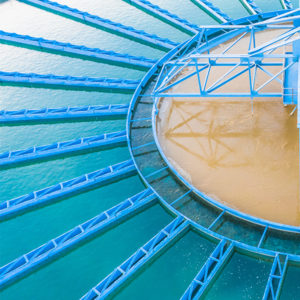The Need for Wastewater Treatments
The need for wastewater treatment systems for any industrial or commercial area is increasing as these make your industry PCB pollution norms compliant.
We at Hydromo, solve all the wastewater challenges using our industry-first technology and systems deployed in sewage treatment and effluent treatment plants.
With new integrated technologies and comprehensive service, Hydromo provides complete solutions for a clean and future-ready water industry using both Sewage and Effluent Treatment Plants (STP & ETP) as well as Common Effluent Treatment Plants (CETP).
We offer a range of technologies that can help you treat and recycle discharge waters back into your process for reuse, a technique that recovers all fluid waste by utilizing our state-of-the-art filtration and thermal technologies.
You can recover around 95% of your liquid waste for reuse, treat and retrieve valuable byproducts from your waste like salts, and produce a dry, solid cake for easy disposal.
We design the specific technologies that will make up your facility’s ZLD treatment system depending on
- -the volume of dissolved material present in the waste
- -the system’s required flow rate, and
- -the specific contaminants present.
ZLD usually includes the following ‘blocks’ of treatment:
Pretreatment– This removes simple things from the wastewater stream that can be filtered or precipitated out.
Conditioning the water to reduce the suspended solids and materials that would otherwise scale or foul.
Concentrating– This step uses membranes like reverse osmosis (RO), brine concentrators, or electrodialysis. 60–80% of the water is retrieved at this stage.
Evaporation– This generates a solid through thermal processes or evaporation, where you evaporate all the water off, collect it, and reuse it. The leftover waste is then filtered out as a solid.
India has been leading the drive for zero liquid discharge regulations in the last decade, due to heavy contamination of numerous important rivers by industrial wastewater. We have inked regulations that require zero liquid discharge to protect rivers and lakes from pollutants to ensure safe water supplies for the future.
This is pushing more and more high-polluting like Tanneries toward ZLD.
While a good deal of water treatment processes attempt to maximize the recovery of freshwater and minimize waste, ZLD is the BEST at doing so. It allows you to recover and use the materials present in the wastewater.
Technologies
The Moving Bed Biofilm Reactor (MBBR) technology is used for advanced wastewater treatment solutions for the industrial and municipal sectors. It adds significantly to the capacity and efficiency of existing wastewater treatment plants while minimizing the size of new plant deployments.
MBBR is highly popular because it improves the efficiency of waste disposal with low energy consumption. It is most suited for the removal of organic substances, and nitrification and denitrification.
The MBBR system is a biofilm process and comprises one or more activated sludge aeration tanks. The sludge is collected on recycled plastic carriers in these tanks. These plastic carriers are called fluidized aerated bed (FAB) media that provide a surface where a biofilm can grow.
The sludge with bacteria grows on the internal surface of the carriers. These bacteria break down the organic matter from the wastewater. The aeration system helps the process by keeping the activated sludge in motion. This is how organic substances are broken down and removed from the water.
Sequencing Batch Reactor (SBR) is a fill-and- draw-activated sludge system for wastewater treatment. This system is used for treating industrial and sewage wastewater. It uses the four steps of filling, aeration, settling, and decantation of wastewater to make it reusable.
Oxygen is bubbled through the mixture of wastewater and activated sludge to reduce the organic matter. The treated effluent is made suitable for discharge into surface waters.
The Membrane Bioreactor Technology (MBR) is a wastewater treatment process where a perm-selective membrane, e.g. Microfiltration or ultrafiltration is integrated with a biological process like a suspended growth bioreactor.
Usually, MBR technology is applied to those wastewaters which carry a high and readily biodegradable organic carbon content like in the food and beverage sector which uses this technology extensively. Industries that use this technology are Construction, Tanneries, and Pharma sectors.
MBRs provide better overall bio-treatment as they encourage the development of the slower-growing micro-organisms, specifically nitrifiers. This fact makes MBRs very effective at the biological removal of ammonia, also called ‘nitrification’.
The wastewater is further converted into BioGas for re-use.
Hydromo handles the challenges of ZLD seamlessly.
 Tail Light 1 x $80.00
Tail Light 1 x $80.00 Wiper Blades 1 x $80.00
Wiper Blades 1 x $80.00 Suspension 1 x $80.00
Suspension 1 x $80.00 Air Filter 1 x $80.00
Air Filter 1 x $80.00 Car Brakes 1 x $80.00
Car Brakes 1 x $80.00








